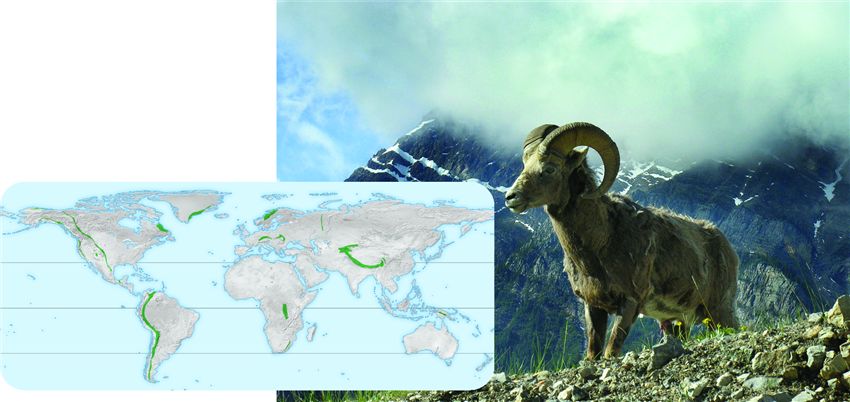 |
| Previous Image | Next Image |
| Description: Physical Environment: Mountain ranges must be treated differently than other biomes. Biome type relies predominantly on climate. On mountains, temperature decreases with increasing elevation through adiabatic cooling, as discussed in the text. Thus, precipitation and temperature may change dramatically, depending on elevation and whether the mountainside is on the windward or leeward side. Location: Mountain ranges exist in many areas of the world, but among the largest are the Himalayas in Asia, the Rockies in North America, and the Andes in South America. Plant Life: Biome type may change from temperate forest through taiga and into tundra on an elevation gradient in the Rocky Mountains, and even from tropical forest to tundra on the highest peaks of the Andes in tropical South America. In tropical regions, daylight varies little from the 12 hours per day throughout the year. Instead of an intense period of productivity, vegetation in the tropical alpine tundra exhibits slow but steady rates of photosynthesis and growth all year. Animal Life: The animals of this biome are as varied as the number of habitats they contain. Generally, more species of plants and animals are found at lower elevations than at higher ones. At higher elevations, animals such as bighorn sheep and mountain goats have to be very sure-footed to climb the craggy slopes and have skidproof pads on their hooves. Despite the often-strong winds, birds of prey, such as eagles, are frequent predators of the furry rodents found at higher elevations, including guinea pigs and marmots. Effects of Humans: Logging and agriculture at lower elevations can cause habitat degradation. Because of the steep slopes, mountain soils are often well drained, thin, and especially susceptible to erosion.
Picture Stats: Views: 1018 Filesize: 57.13kB Height: 402 Width: 850 Source: https://biology-forums.com/index.php?action=gallery;sa=view;id=1350 |
